Содержание
- 2. A Journey Through Implementing Multiscattering BRDFs & Area Lights Stephen McAuley
- 4. [Heitz16a]
- 5. [Kulla17]
- 6. If the energy reflected for a given BRDF f and a viewing direction is: Then find
- 7. The following BRDF fits that equation: Where:
- 8. In fact, that only holds for 100% reflective microfacets. Energy is lost between each bounce. Sum
- 9. Need to Calculate: For a given roughness 1-E(μ) Eavg Favg
- 10. std::fstream isotropicEnergyFile; isotropicEnergyFile.open("isotropic_reflected_energy.csv", std::ios_base::out); for (int j = 0; j { float s = float(j) /
- 11. float AverageEnergy(float alpha) { static const int NumBRDFSamples = 16384; float averageEnergy = 0.0f; for (int
- 12. float AverageEnergy(float smoothness) { float r = -0.0761947f - 0.383026f * smoothness; r = 1.04997f +
- 13. Multiscattering Specular Off Dielectrics
- 14. Multiscattering Specular On Dielectrics
- 15. Multiscattering Specular Off Metals
- 16. Multiscattering Specular On Metals
- 17. Multiscattering Diffuse
- 18. Goals: Improvements to Lambertian diffuse Multiscattering is taken into account Diffuse reacts to surface roughness Diffuse
- 19. Material Advances in Call of Duty: WWII [Chan18]
- 21. float MultiScatteringDiffuseBRDF(float lDotH, float nDotL, float nDotV, float nDotH, float smoothness) { // Burley to CoD
- 22. float MultiScatteringDiffuseBRDF(float lDotH, float nDotL, float nDotV, float nDotH, float smoothness) { // Burley to CoD
- 23. Lambert Diffuse
- 24. Multiscattering Diffuse
- 25. Difference x8
- 26. “Are we there yet?”
- 29. Problems: No multiscattering indirect specular No multiscattering specular on hair No multiscattering indirect diffuse No multiscattering
- 30. Problems: No multiscattering indirect specular No multiscattering wrapped diffuse No multiscattering diffuse on skin No multiscattering
- 31. Indirect specular
- 32. Split-Sum Approximation [Karis13]
- 33. Environment Map BRDF
- 34. Environment Map BRDF
- 35. Multiscattering Environment Map BRDF
- 36. Multiscattering Environment Map BRDF
- 37. Multiscattering Environment Map BRDF
- 38. Multiscattering Environment Map BRDF
- 39. Environment Map BRDF
- 40. Multiscattering Environment Map BRDF
- 41. [FdezAgüera19]
- 42. The paper observes that the single-scattering energy is in fact the sum of the red and
- 43. Given that Favg can be calculated analytically, and multiply-scattered light is diffuse, we get the following
- 44. Given that Favg can be calculated analytically, and multiply-scattered light is diffuse, we get the following
- 45. Single Scattering
- 46. Fdez-Agüera
- 47. Approximation to Fdez-Agüera
- 48. This gives a multiscattering formula for the environment BRDF as:
- 49. [Turquin19]
- 50. Approximation to Fdez-Agüera
- 51. Turquin
- 52. Multiscattered Specular [Kulla17]
- 53. Approximation to Fdez-Agüera
- 54. Turquin
- 58. Problems: No multiscattering indirect specular No multiscattering specular on hair No multiscattering indirect diffuse No multiscattering
- 60. Problems: No multiscattering indirect specular No multiscattering specular on hair No multiscattering indirect diffuse No multiscattering
- 61. Area Lights
- 62. Goals: Improve cinematic lighting: Softer light falloffs More realistic specular response: Broader, more visible highlights Artists
- 63. [Heitz16b]
- 64. Why LTCs? Fast to implement Full source code and demos available Flexibility in performance and light
- 65. Integrating a LTC over a A clamped cosine distribution can be analytically integrated over polygonal shapes
- 66. Integrating a LTC over a We can linearly transform this distribution to approximate BRDFs
- 67. Integrating a LTC over a Integrating a polygon over an LTC becomes integrating a polygon over
- 68. Integrating a LTC over a [Hill16] Q. LTCs always integrate to 1, but what about the
- 69. Integrating a LTC over a [Hill2016] Apply Schlick’s approximation to Fresnel to get two components:
- 70. Implementation: Offline, generate look up tables: Inverse matrix transform Magnitude and Fresnel In the shader: Calculate
- 71. Point Light
- 72. Quad Light
- 73. Disk Light
- 74. “Are we there yet?”
- 78. Problems: No implementation for cloth No implementation for multiscattering diffuse No implementation for multiscattering specular How
- 79. Source code available! https://github.com/selfshadow/ltc_code
- 80. Problems: No implementation for cloth No implementation for multiscattering diffuse No implementation for multiscattering specular How
- 81. Inverse Matrix LUT Magnitude and Fresnel LUT LTCs for Multiscattering Diffuse
- 82. Lambert Diffuse
- 83. Multiscattering Diffuse
- 84. Inverse Matrix LUT Magnitude and Fresnel LUT LTCs for Ashikhmin Cloth [Ashikhmin00]
- 85. Ashikhmin Cloth: Point Light
- 86. Ashikhmin Cloth: Area Light
- 87. Disney Sheen [Burley12]
- 88. Magnitude and Fresnel LUT for Multiscattering Diffuse Lambert Diffuse X
- 89. Disney Sheen: Point Light
- 90. Disney Sheen: Area Light
- 91. Problems: No implementation for cloth No implementation for multiscattering diffuse No implementation for multiscattering specular How
- 92. LTC magnitude and Fresnel relies on a linear dependency on F0: But our multiscattering BRDF has
- 93. [FdezAgüera19]
- 94. We have a formula for a multiscattering BRDF: E(μ) is the red channel in our magnitude
- 95. [Turquin19]
- 96. Single Scattering Specular
- 97. Approximation to Fdez-Agüera
- 98. Turquin
- 99. Problems: No implementation for cloth No implementation for multiscattering diffuse No implementation for multiscattering specular How
- 100. w = 0 w = 0.5 w = 1.0 Wrapped Lambertian Diffuse:
- 101. Rotate the normal towards the light
- 102. Axis-angle rotation Axis: Angle:
- 103. Axis: Sin Angle: Axis-angle rotation
- 104. float3 WrappedNormal(const float3 N, const float3 L, const float w) { float cosTheta = dot(N, L);
- 105. w = 0 w = 0.5 w = 1.0 Wrapping the lighting around the sphere adds
- 106. Surface area of spherical cap
- 107. Surface area of the extent of wrapped lighting on a unit sphere
- 108. Surface area of hemisphere: Surface area of the extent of wrapped lighting on a unit sphere
- 109. w = 0 w = 0.5 w = 1.0 Normalised lighting:
- 110. Multiscattering Diffuse, w = 0.0
- 111. Multiscattering Diffuse, w = 0.5
- 112. Multiscattering Diffuse, w = 1.0
- 113. Area Light, w = 0.0
- 114. Area Light, w = 0.5
- 115. Area Light, w = 1.0
- 116. Problems: No implementation for cloth No implementation for multiscattering diffuse No implementation for multiscattering specular How
- 117. cos theta curvature [Penner11] Pre-integrated scattering: Integrate Lambert diffuse over spheres of different curvatures
- 118. [Penner11] Pre-integrated scattering for multiscattering diffuse BRDF: 4D LUT required – adding view angle and roughness
- 119. [Jimenez12] Separable Screen-Space Subsurface Scattering
- 121. Problems: No implementation for cloth No implementation for multiscattering diffuse No implementation for multiscattering specular How
- 123. Remember this problem? No multiscattering indirect specular No multiscattering specular on hair No multiscattering indirect diffuse
- 124. We have a spherical harmonic projection for a clamped cosine distribution…
- 125. …and we have a mapping from an LTC to a clamped cosine distribution.
- 126. LTCs for Spherical Harmonics Treat SH bands as “area light source” Rotate SH bands by LTC
- 127. LTCs for Spherical Harmonics Treat SH bands as “area light source” Rotate cosine lobe by LTC
- 128. float2 uv = LTCTextureCoordinates(nDotV, smoothness); float4 t1 = LTCMSDiffuseInvMatrixTexture.SampleLevel(Clamp, uv, 0); float2 t2 = LTCMSDiffuseMagFresnelTexture.SampleLevel(Clamp, uv
- 129. Lambert Indirect Diffuse
- 130. Multiscattering BRDF Indirect Diffuse
- 131. Ground Truth*
- 132. Multiscattering BRDF Indirect Diffuse
- 133. Scaling by BRDF Magnitude Only
- 134. Problems Solved: Multiscattering diffuse Direct, indirect and wrapped lighting Multiscattering specular Direct and indirect lighting Area
- 135. Problems Remaining: Hair Area lighting Multiscattering diffuse and specular Skin Diffuse area lighting Multiscattering diffuse
- 136. What have we learned?
- 137. Takeaway #1: Source code is invaluable
- 138. Takeaway #2: Separate insight from implementation
- 139. Takeaway #3: Build on successful existing work
- 140. Takeaway #4: Never underestimate implementation time
- 141. Epilogue: Implementation Details for Area Lights
- 142. Goals: Control over performance Radius falloff Cone angle falloff Fall back to point lights Omni or
- 143. Goals: Control over performance Radius falloff Cone angle falloff Fall back to point lights Omni or
- 144. Windowing Function [Karis13] r
- 145. Cone Falloff θ = inner angle φ = outer angle
- 146. Inverse Square Law
- 147. Accounted for in integration over the hemisphere
- 148. Goals: Control over performance Radius falloff Cone angle falloff Fall back to point lights Omni or
- 149. Quad light falls back to spot light
- 150. projector distance Move projector position behind the light source
- 151. projector distance Use cone apex for cone angle fall off for spot and quad light
- 152. Calculate the projector distance p from outer angle and light source diameter
- 153. Worse fit for non-square light source shapes Cone fits around quad light source d d
- 154. Quad light, 100° outer angle, 90° inner angle
- 155. Fall back, 100° outer angle, 90° inner angle
- 156. Quad light, 120° outer angle, 110° inner angle
- 157. Fall back, 120° outer angle, 110° inner angle
- 158. Quad light, 140° outer angle, 130° inner angle
- 159. Fall back, 140° outer angle, 130° inner angle
- 162. Скачать презентацию


![[Heitz16a]](/_ipx/f_webp&q_80&fit_contain&s_1440x1080/imagesDir/jpg/247354/slide-3.jpg)
![[Kulla17]](/_ipx/f_webp&q_80&fit_contain&s_1440x1080/imagesDir/jpg/247354/slide-4.jpg)













![Material Advances in Call of Duty: WWII [Chan18]](/_ipx/f_webp&q_80&fit_contain&s_1440x1080/imagesDir/jpg/247354/slide-18.jpg)












![Split-Sum Approximation [Karis13]](/_ipx/f_webp&q_80&fit_contain&s_1440x1080/imagesDir/jpg/247354/slide-31.jpg)








![[FdezAgüera19]](/_ipx/f_webp&q_80&fit_contain&s_1440x1080/imagesDir/jpg/247354/slide-40.jpg)







![[Turquin19]](/_ipx/f_webp&q_80&fit_contain&s_1440x1080/imagesDir/jpg/247354/slide-48.jpg)


![Multiscattered Specular [Kulla17]](/_ipx/f_webp&q_80&fit_contain&s_1440x1080/imagesDir/jpg/247354/slide-51.jpg)










![[Heitz16b]](/_ipx/f_webp&q_80&fit_contain&s_1440x1080/imagesDir/jpg/247354/slide-62.jpg)




![Integrating a LTC over a [Hill16] Q. LTCs always integrate](/_ipx/f_webp&q_80&fit_contain&s_1440x1080/imagesDir/jpg/247354/slide-67.jpg)
![Integrating a LTC over a [Hill2016] Apply Schlick’s approximation to Fresnel to get two components:](/_ipx/f_webp&q_80&fit_contain&s_1440x1080/imagesDir/jpg/247354/slide-68.jpg)














![Inverse Matrix LUT Magnitude and Fresnel LUT LTCs for Ashikhmin Cloth [Ashikhmin00]](/_ipx/f_webp&q_80&fit_contain&s_1440x1080/imagesDir/jpg/247354/slide-83.jpg)


![Disney Sheen [Burley12]](/_ipx/f_webp&q_80&fit_contain&s_1440x1080/imagesDir/jpg/247354/slide-86.jpg)





![[FdezAgüera19]](/_ipx/f_webp&q_80&fit_contain&s_1440x1080/imagesDir/jpg/247354/slide-92.jpg)

![[Turquin19]](/_ipx/f_webp&q_80&fit_contain&s_1440x1080/imagesDir/jpg/247354/slide-94.jpg)





















![cos theta curvature [Penner11] Pre-integrated scattering: Integrate Lambert diffuse over spheres of different curvatures](/_ipx/f_webp&q_80&fit_contain&s_1440x1080/imagesDir/jpg/247354/slide-116.jpg)
![[Penner11] Pre-integrated scattering for multiscattering diffuse BRDF: 4D LUT required](/_ipx/f_webp&q_80&fit_contain&s_1440x1080/imagesDir/jpg/247354/slide-117.jpg)
![[Jimenez12] Separable Screen-Space Subsurface Scattering](/_ipx/f_webp&q_80&fit_contain&s_1440x1080/imagesDir/jpg/247354/slide-118.jpg)























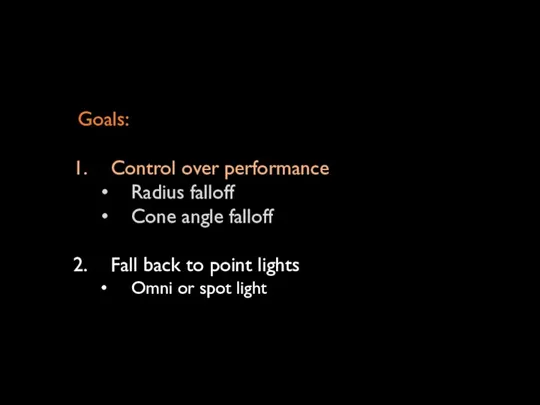
![Windowing Function [Karis13] r](/_ipx/f_webp&q_80&fit_contain&s_1440x1080/imagesDir/jpg/247354/slide-143.jpg)

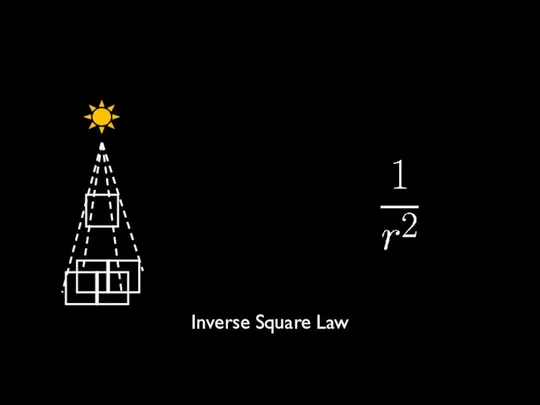
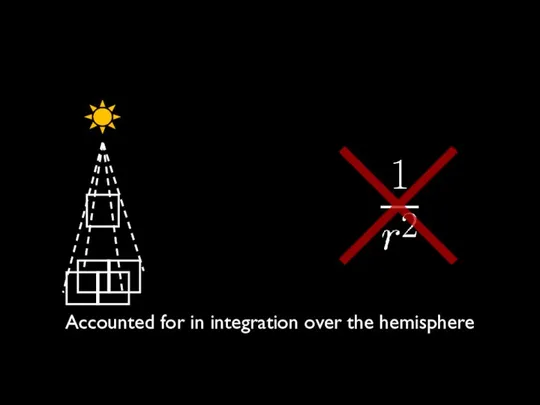
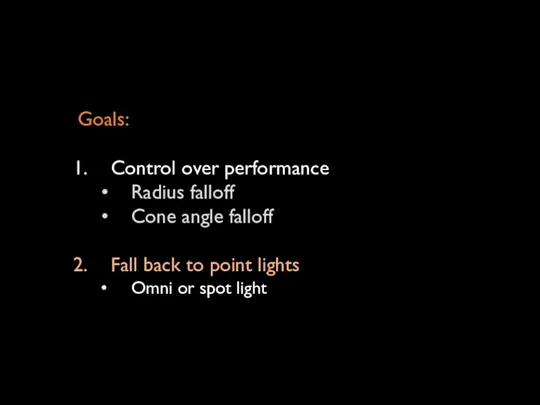
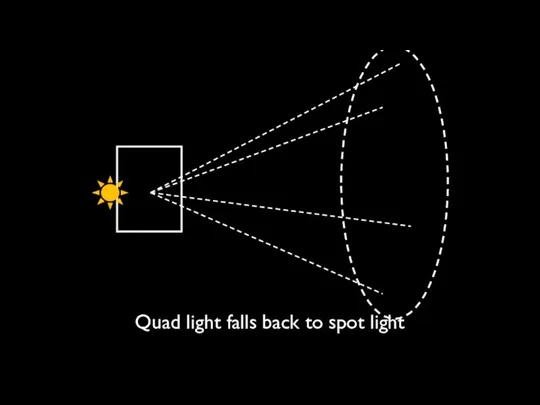
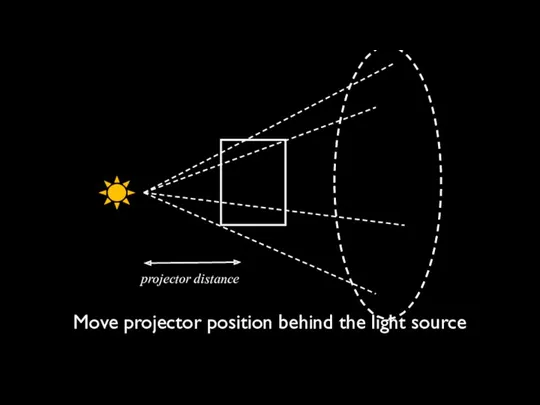
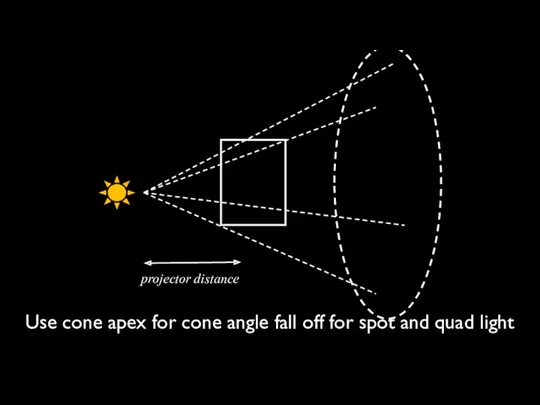
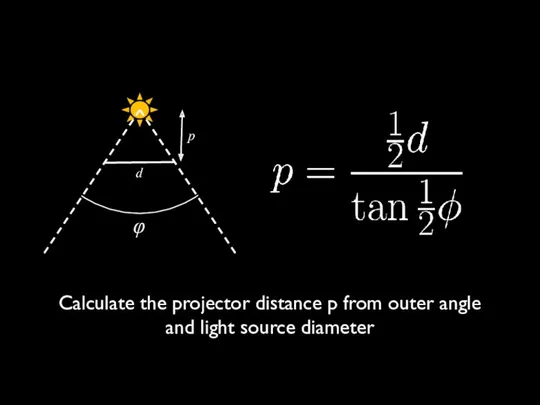
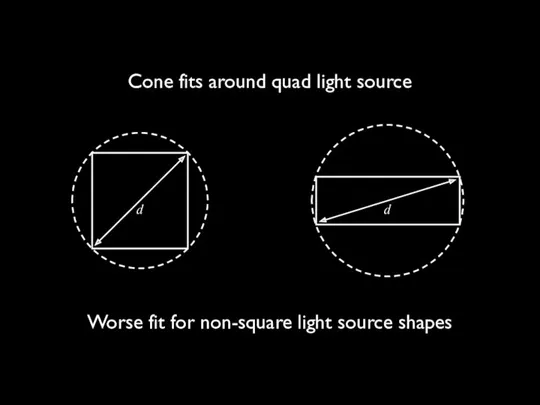
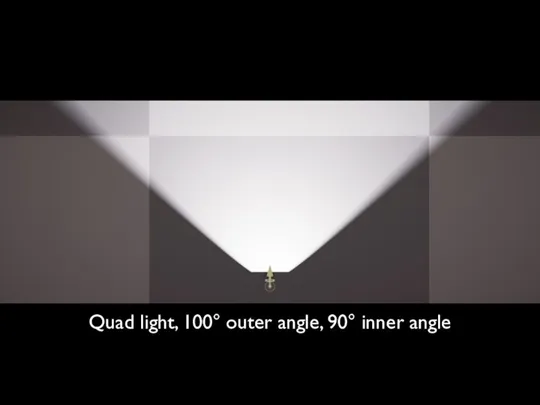
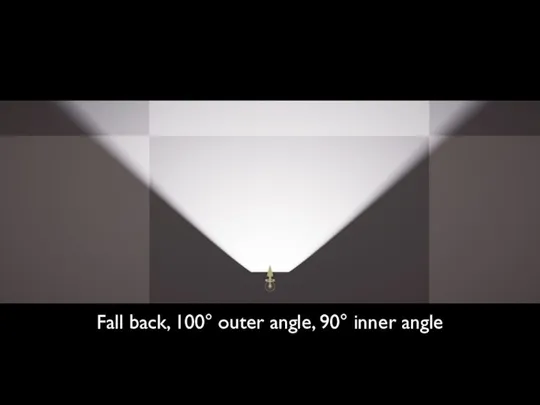
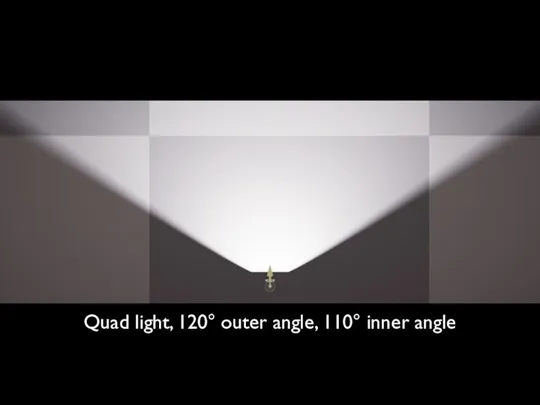
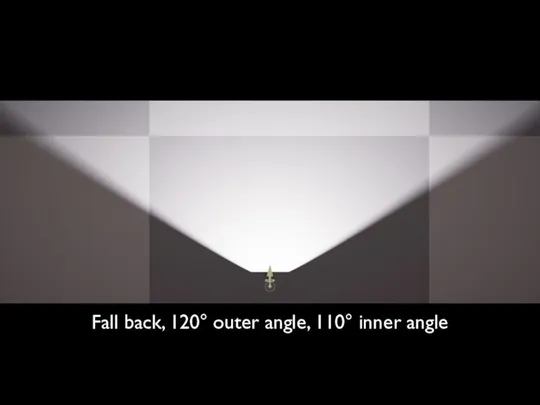
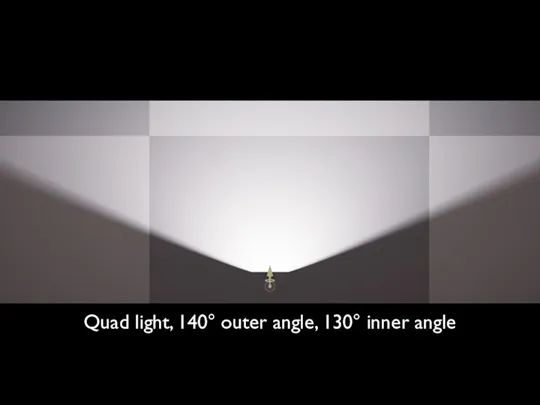
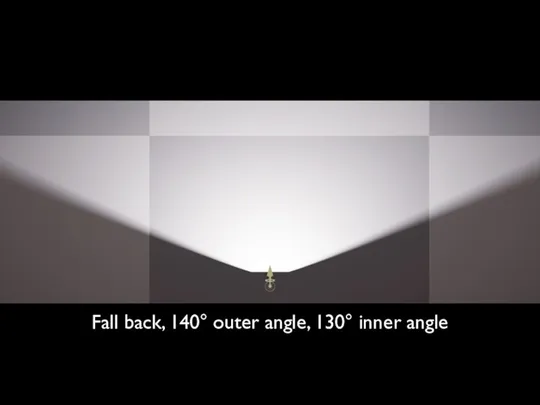

 Подготовка и проведение уроков различного типа на основе использования ЭОР. Предмет: Физика
Подготовка и проведение уроков различного типа на основе использования ЭОР. Предмет: Физика Ремонт и сборка зубчатых передач
Ремонт и сборка зубчатых передач Динаміка матеріальної точки
Динаміка матеріальної точки Устройство велосипеда
Устройство велосипеда Методическая разработка Механическая работа
Методическая разработка Механическая работа Упругие элементы машин
Упругие элементы машин Голография и ее применение
Голография и ее применение Оружие ведущее к победе
Оружие ведущее к победе Момент инерции. Теорема Штейнера. Кинетическая энергия вращательного движения твердого тела. (Лекция 5)
Момент инерции. Теорема Штейнера. Кинетическая энергия вращательного движения твердого тела. (Лекция 5) Система распределенного впрыска
Система распределенного впрыска Физические величины и их математическая размерность
Физические величины и их математическая размерность Урок Зависимость силы тока от напряжения. Презентация 8 класс
Урок Зависимость силы тока от напряжения. Презентация 8 класс Механические характеристики исполнительных механизмов и электродвигателей. Лекция 2
Механические характеристики исполнительных механизмов и электродвигателей. Лекция 2 20230211_fizika_7_klass_plotnost_veshchestva._zadachi
20230211_fizika_7_klass_plotnost_veshchestva._zadachi Поверхностное натяжение жидкости. Смачивание, капиллярные явления
Поверхностное натяжение жидкости. Смачивание, капиллярные явления Лампы накаливания
Лампы накаливания Устройство автомобиля
Устройство автомобиля Сплавы с памятью формы
Сплавы с памятью формы Development of a high performance optical cesium beam clock for ground applications
Development of a high performance optical cesium beam clock for ground applications Простые механизмы. Рычаг. Условие равновесия рычага
Простые механизмы. Рычаг. Условие равновесия рычага Алгоритм FDTD. Введение в метод FDTD
Алгоритм FDTD. Введение в метод FDTD Аэродинамика и летно-технические данные вертолёта. Тема №1. Аэродинамическая компоновка вертолета. Групповое занятие №4
Аэродинамика и летно-технические данные вертолёта. Тема №1. Аэродинамическая компоновка вертолета. Групповое занятие №4 Магнітні властивості речовин
Магнітні властивості речовин Источники звука. Высота, тембр, громкость звука
Источники звука. Высота, тембр, громкость звука Датчики температуры
Датчики температуры Основные принципы современного естетсвозанния. Происхождение и структура Вселенной. Уровень элементарных частиц
Основные принципы современного естетсвозанния. Происхождение и структура Вселенной. Уровень элементарных частиц Оптические явления
Оптические явления Презентация к уроку физики 10 класс Движение по окружности
Презентация к уроку физики 10 класс Движение по окружности